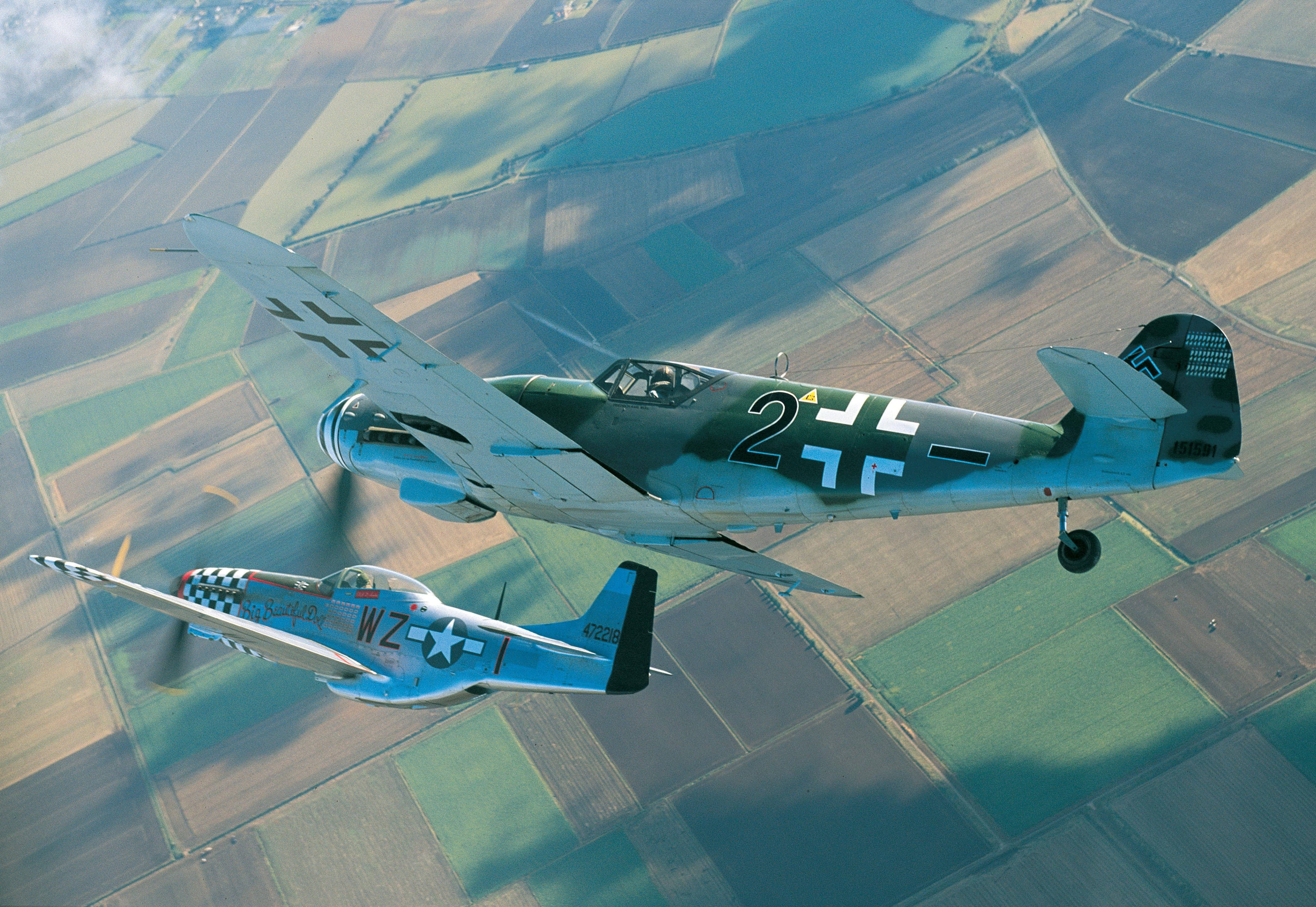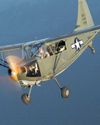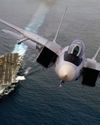Prøve GULL - Gratis
FLYING THE Bf 109: Two pilots give their reports
Flight Journal
|April 2020
The Bf 109 is, without a doubt, the most satisfying and challenging aircraft I have ever flown. So how does it fly and how does it compare with other WW II fighters?

To my eye, the aircraft looks dangerous, both to the enemy and to its own pilots. Its “difficult” reputation is well-known, and right from the outset, you are aware that it needs to be treated with a great deal of respect.
As you walk up to the 109, you are at first struck by its small size, particularly if it is parked next to a contemporary American fighter. Closer examination reveals a crazy-looking, knock-kneed undercarriage, a very heavily framed, sideways-opening canopy with almost no forward view in the three-point attitude, a long rear fuselage and tiny tail surfaces.
A walk around reveals ingenious split radiator flaps and ailerons with a lot of movement and rather odd-looking external mass balances. It also has independently operating leading-edge slats. These devices should glide open and shut on the ground with the pressure of a single finger. Other unusual features include the horizontal stabilizer that doubles as the elevator trimmer and the complete absence of a rudder trim system. Overall, the finish is a strange mix of the innovative and archaic.
To enter the cockpit, you climb on board and gently lower yourself downward and forward while holding on to the windscreen. Once inside, you are almost lying down, as you would be if driving a racecar. The cockpit is narrow, and if you have broad shoulders (don’t all fighter pilots?), it is a tight squeeze. Once strapped in—itself a knuckle-rapping affair—you can take stock.
First impressions are of its simplicity. From left to right, the co-located elevator trim and flap trim wheels fall easily to hand. You need several turns to get the flaps fully down to 10 degrees, and the idea is that you can crank both together. In practice, this is a little difficult, and I tend to operate them independently.
Denne historien er fra April 2020-utgaven av Flight Journal.
Abonner på Magzter GOLD for å få tilgang til tusenvis av kuraterte premiumhistorier og over 9000 magasiner og aviser.
Allerede abonnent? Logg på
FLERE HISTORIER FRA Flight Journal

Flight Journal
ELLIPTICAL ELEGANCE
Flying and evaluating the Seafire Mark III
4 mins
November - December 2025

Flight Journal
IRON DOG
Fighting the Pacific and the P-39 at the same time
14 mins
November - December 2025

Flight Journal
Fighter Pilots: A Warrior Clan
TAKE A HARD LOOK at the two young men in these photos. Do they look as if they were bent on killing one another? On the left we have a young, unknown enlisted Japanese pilot standing in front of a Nakajima Ki-27 \"Nate,\" one of Japan's earliest monoplanes that led to the much vaunted Zero.
3 mins
November - December 2025

Flight Journal
KEN WALSH THE FIRST CORSAIR ACE
Medal of Honor pilot's combat adventures
12 mins
November - December 2025

Flight Journal
Big Chief's Little Chief
Thunderbolt action with the Wolf Pack
11 mins
November - December 2025

Flight Journal
ENEMY PILOTS SPEAK Voices from the other side
All too often American students of air warfare forget that enemy aircraftwhether Messerschmitts or MiGs-were flown by human beings with the same motivations and traits as Allied airmen. More often than not, the only difference between friend and foe was the paint on the airplane and where they landed. Therefore, we've assembled a variety of accounts from WW II Axis fighter pilots, men who were more than simply targets.
11 mins
November - December 2025

Flight Journal
FLYING THE FW 190
A legend gets checked out in the Butcher Bird
15 mins
November - December 2025

Flight Journal
DOUBLE-THEATER ACE
The fearless missions of legendary fighter pilot Col. John D. Landers
12 mins
November - December 2025

Flight Journal
WARBUG IN THE PACIFIC
Surviving combat in a Stinson OY-1/L-5
10 mins
September - October 2025

Flight Journal
WINGS OF THE FLEET
Celebrating the U.S. Navy's 250-year legacy
9 mins
September - October 2025
Translate
Change font size

